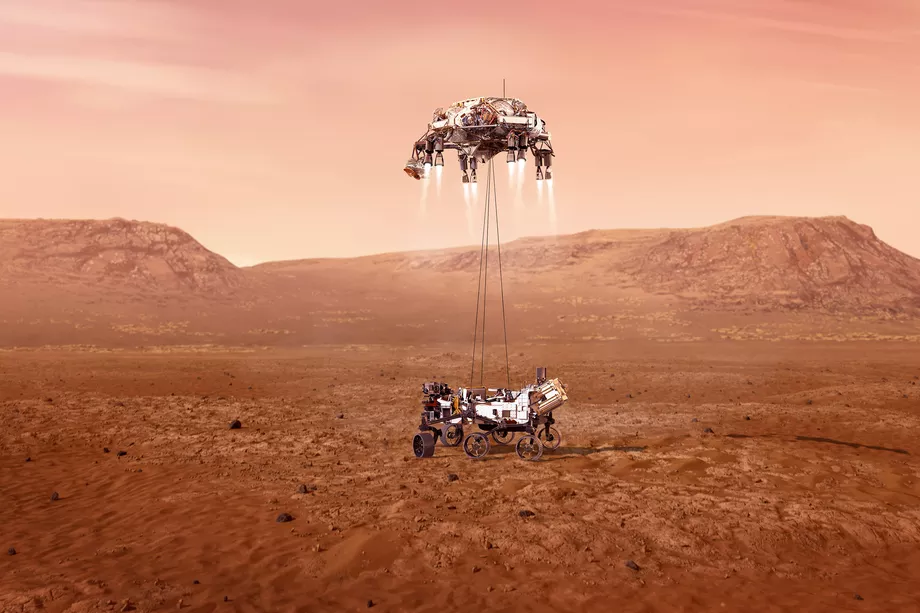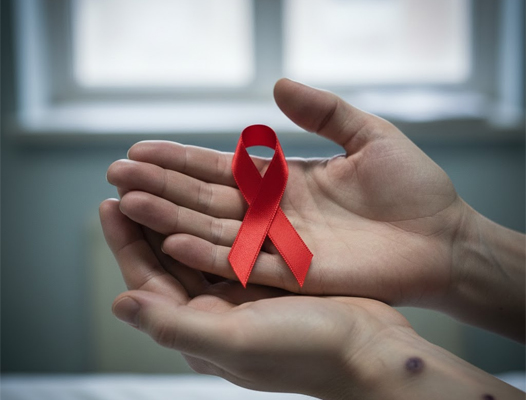Washington, Feb 19: After a nearly seven month journey through space, Perseverance -- the largest and the most advanced rover NASA has ever sent to another world -- successfully touched down on the surface of Mars on Friday in a nail-biting landing that marks its first step in the search for signs of ancient microbial life on the Red Planet.
Packed with groundbreaking technology, the Mars 2020 mission launched on July 30, last year, from Cape Canaveral Space Force Station in Florida, US.
The rover streaked through the Martian atmosphere and landed safely inside the vast Jezero Crater on Mars, after traversing 472 million kilometres from the Earth, the US space agency said.
The touchdown of the rover marks an ambitious first step in the effort to collect Mars samples and return them to Earth, it said.
"This landing is one of those pivotal moments for NASA, the US, and space exploration globally -- when we know we are on the cusp of discovery and sharpening our pencils, so to speak, to rewrite the textbooks," said acting NASA Administrator Steve Jurczyk.
"The mission itself personifies the human ideal of persevering towards the future and will help us prepare for human exploration of the Red Planet," Jurczyk said in a statement.
About the size of a car, 1,026-kilogramme "robotic geologist and astrobiologist" will undergo several weeks of testing before it begins its two-year science investigation of Mars' Jezero Crater, NASA said.
While the rover will investigate the rock and sediment of Jezero's ancient lakebed and river delta to characterise the region's geology and past climate, a fundamental part of its mission is astrobiology, including the search for signs of ancient microbial life, it said.
To that end, the Mars Sample Return campaign, being planned by NASA and European Space Agency (ESA), will allow scientists on Earth to study samples collected by Perseverance to search for definitive signs of past life using instruments too large and complex to send to the Red Planet.
"Because of today's exciting events, the first pristine samples from carefully documented locations on another planet are another step closer to being returned to Earth," said Thomas Zurbuchen, associate administrator for science at NASA.
"Perseverance is the first step in bringing back rock and regolith from Mars. We don't know what these pristine samples from Mars will tell us. But what they could tell us is monumental -- including that life might have once existed beyond Earth," Zurbuchen said.
Some 45 kilometers wide, Jezero Crater sits on the western edge of Isidis Planitia, a giant impact basin just north of the Martian equator.
Scientists have determined that 3.5 billion years ago the crater had its own river delta and was filled with water.
Equipped with seven primary science instruments, the most cameras ever sent to Mars, and its exquisitely complex sample caching system -- Perseverance will scour the Jezero region for fossilised remains of ancient microscopic Martian life, taking samples along the way, according to the US space agency.
"Perseverance is the most sophisticated robotic geologist ever made, but verifying that microscopic life once existed carries an enormous burden of proof," said Lori Glaze, director of NASA's Planetary Science Division.
"While we'll learn a lot with the great instruments we have aboard the rover, it may very well require the far more capable laboratories and instruments back here on Earth to tell us whether our samples carry evidence that Mars once harboured life," Glaze added.
Director of NASA's Jet Propulsion laboratory (JPL), Michael Watkins, noted that landing on Mars is always an incredibly difficult task.
"We built the rover not just to land but to find and collect the best scientific samples for return to Earth, and its incredibly complex sampling system and autonomy not only enable that mission, they set the stage for future robotic and crewed missions," Watkins said.
The Mars Entry, Descent, and Landing Instrumentation 2 (MEDLI2) sensor suite collected data about Mars' atmosphere during entry, and the Terrain-Relative Navigation system autonomously guided the spacecraft during final descent.
The data from both are expected to help future human missions land on other worlds more safely and with larger payloads, NASA said.
The US space agency said that Mastcam-Z, a pair of zoomable science cameras on Perseverance's remote sensing mast, or head, creates high-resolution, colour 3D panoramas of the Martian landscape.
Also located on the mast, the SuperCam uses a pulsed laser to study the chemistry of rocks and sediment and has its own microphone to help scientists better understand the property of the rocks, including their hardness.
The diminutive Ingenuity Mars Helicopter, currently attached to the belly of Perseverance, is a technology demonstration that will attempt the first powered, controlled flight on another planet, according to NASA.
It said the project engineers and scientists will now put Perseverance through its paces, testing every instrument, subsystem, and subroutine over the next month or two, adding that only then will they deploy the helicopter to the surface for the flight test phase.
If successful, Ingenuity could add an aerial dimension to exploration of the Red Planet in which such helicopters serve as a scouts or make deliveries for future astronauts away from their base, NASA added.
Miss my landing? Catch the highlights below.
— NASA's Perseverance Mars Rover (@NASAPersevere) February 19, 2021
Send us your own highlights too. Share your pictures and video using #CountdownToMars. pic.twitter.com/OL2wSAi36e
Let the Truth be known. If you read VB and like VB, please be a VB Supporter and Help us deliver the Truth to one and all.
Satna/Bhopal (PTI): Four children suffering from thalassemia have tested HIV positive at Satna District Hospital in Madhya Pradesh allegedly due to contaminated blood transfusions, officials said on Tuesday.
The case is four months old and an investigation is underway into it, an official said.
Officials suspect the use of contaminated needles or blood transfusions for the spread of infection to the children.
ALSO READ: 3 Indian students among those injured in Australia’s Bondi Beach attack
MP Health Minister Rajendra Shukla told reporters in Bhopal that he has ordered a probe into the matter and sought a report.
“It is also being investigated whether the blood transfusion took place in other hospitals also or only in the government hospital,” he said.
The affected children, aged between 12 and 15 years, received blood transfusions from the hospital's blood bank, as per an official.
Devendra Patel, in-charge of the blood bank at Sardar Vallabhbhai Patel District Hospital in Satna, said four children have tested HIV positive and an investigation is underway to determine how they got infected.
"Either an infected needle was used or a blood transfusion occurred. These are the two main reasons I believe. Blood transfusion seems to be the most likely cause," he told PTI Videos.
All these children suffer from thalassemia, and some have received 80 or 100 blood transfusions, he said.
A family member of one of the affected children said that their child was found to be HIV positive during a routine checkup about four months back, and he has been receiving medication, but it had proven to be of no use.
After taking the medication for HIV, the child starts vomiting, feels low and becomes ill, he said.
After the four children were detected with HIV infection, their family members were also tested and the results came out negative, he added.
The Opposition Congress targeted the government over the matter and demanded the resignation of Health Minister Shukla.
Speaking to reporters in Bhopal, Congress MLA and former minister Sachin Yadav claimed such incidents were continuously occurring in Madhya Pradesh.
Earlier, a case of toxic cough syrup came to light in Chhindwara, followed by incidents of rat bites at hospitals in Indore and Satna, and now children have been given HIV-infected blood, he said.
"The health minister is unable to manage the department. He should resign. A murder case should be filed against those responsible for the Satna incident," Yadav said.
Senior Congress leader Sajjan Singh Verma termed it a failure of the government. Chief Minister Mohan Yadav's government has no connection with ground realities, he charged.
"Somewhere rats are roaming in hospitals, somewhere children are being given HIV-infected blood. Instead of preventing HIV, you are spreading it. Mohan Yadav should wake up from his slumber. Children are the nation's heritage and should be taken care of," he added.





